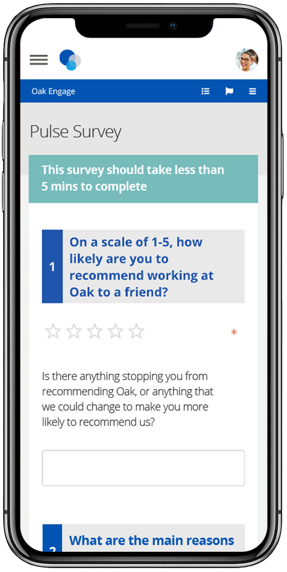Employee satisfaction is a measure of how much an individual enjoys their job and how content they are in their role. How satisfied an employee is with their job can deeply affect an organisation. From productivity slumps to loss of valuable employees, if job satisfaction isn’t high within your organisation, it could face grave consequences.
Low employee satisfaction is unfortunately very common, with 1 in 10 UK employees admitting to having very low levels of happiness while at work. But why are employees experiencing underwhelming job satisfaction? Let’s take a look at the reasons why employees might be unhappy at work:
Being Underpaid
Being or feeling underpaid can be a key motivator for low job satisfaction. Research conducted by Resolution Foundation found a quarter of people aged 25 or over who should have received the minimum wage were being underpaid.
Poor Workplace Relationships
A huge part of employee satisfaction is about getting along well with managers and colleagues. If there are conflicts in the workplace it’s most likely going to lead to employees being unhappy at work. Good employee relationships are key to improving engagement and productivity.
Lack of Progression
Feeling stuck in your career is a key motivator to poor employee satisfaction. When an employee starts a job they usually don’t plan to be in the same position three years later. Career progression is a key part of any job and can give a sense of purpose to employees. If there are limited opportunities for growth for an employee within a business, chances are they’ll look for another organisation where they can climb the career ladder.
Poor Work/Life Balance

Encouraging employees to lead a healthy work/life balance is essential for better productivity, increasing retention and improving employee satisfaction. Luckily, there has been more of a focus on promoting a healthy work/life balance in the last 10 years due to the working population becoming Millennials, who are most bothered about finding a career to suit their lifestyle. Baby Boomers on the other hand were subjected to long working hours, resulting in 80% of the generation experiencing moderate levels of stress in modern-day life. A healthy work/life balance is extremely important to employees. 72% of workers said that it would be an important factor when selecting a new job.
How Can I Measure Employee Satisfaction
Many organisations believe their employees are happy at work because they hardly ever complain and don’t speak up, but this most likely isn’t the case. Even if you do think your employees are satisfied at work, it’s still important to keep on top of how your employees are feeling and find ways to measure satisfaction.
Here are some ways you can measure job satisfaction in the workplace;
1. Conduct Employee Satisfaction Surveys
What is the best way to gather valuable data and gauge how your employees are truly feeling? An employee satisfaction survey of course.
Employee satisfaction surveys are a valuable HR tool that determines how happy workers are in their current positions. As well as being able to find out how your employees are feeling, the survey is also an opportunity for them to give feedback about the workplace and recommend improvements.
When it comes to designing your survey, you’ll need to think carefully about the questions you’re going to ask to retain useful information from your employees. Try and be as specific as possible, if you ask vague questions you’re not going to get to the root of the problem.
Here are some questions you should consider asking:
- On a scale of 1-10, how happy are you with your role right now?
- Do you think that you add value to your team and the business as a whole?
- Do you feel valued for the work you do?
- Do you see yourself working here in a year?
- Do you feel like there are enough opportunities to progress and develop in your role within the business?
Here at Oak, we understand how important it is to keep on top of job satisfaction, which is why our platform enables you to create Pulse Surveys to gather valuable data from your employees with ease. A Pulse Survey can be created in minutes and enables your employees to give their honest feedback, either named or anonymously.

2. Schedule In Meetings
Once you’ve distributed your survey, you’ll need to analyse the results and start by identifying the employees who appear to be unhappy. Schedule 1-1 meetings with employees where you can ask more questions about the survey and establish why the employee is not satisfied in their role.
The agenda of the meeting should be focused on employee satisfaction and for you to establish if there is any way you can help your employee feel happier at work. Having a one on one meeting with an employee can build trust and enable you to build a lasting relationship. Research shows that when employees feel a sense of trust in the workplace, they will feel more confident and perform at a higher level.
3. Keep On Top of Intranet Engagement
If you need to measure employee satisfaction, chances are you’ve probably used your company intranet to help you with this. If you’ve noticed a dip in engagement or interaction on your intranet, it could be a key indicator of poor job satisfaction.
Make sure you track analytics of all content and look out for those that aren’t interacting with content. Here, you can identify employees who might be at risk of having low employee satisfaction.
How Can I Improve Employee Satisfaction
If there is an issue with job satisfaction within your organisation, don’t panic. There are ways you can boost it up and create a happy working environment for your employees.
Encourage Employees to Communicate
Let’s face the facts, humans are natural-born communicators. The non-talking rule in the workplace is outdated and unrealistic. If you impose a talking ban within your organisation, you’ll most likely see employees turn their back and look for another place to work. Communication is part of human nature and an organisation that values open communication between employees will have a fantastic workplace culture.
Meaningful conversations with other employees enable people to think more creatively and can encourage employee growth and development.
Reward Employees
Appreciation in the workplace plays an extremely important role in increasing employee satisfaction. In fact, a recent survey found that 72% of employees would work harder if they were appreciated and 90% of employees said that recognition was important to them.
Employee appreciation can come in many different forms, on the bigger scale you could reward an employee for hard work with a promotion or a pay rise but recognition doesn’t have to be costly. A simple ‘Thank You’ card or a shout out in a team meeting to an employee who worked particularly hard on an important project can be greatly motivating.
Focus On Growth & Development
As we touched upon earlier, many employees experience low job satisfaction due to a lack of opportunities to grow within a business. Therefore, it’s important to invest time and money into growth and development programs for your employees.
Take the time to sit down with employees to talk about career progression and how you as their employer can help them progress in their career. Although training courses can be costly, they can save you a lot of money in the long run due to improved employee retention.
Summary
Like we said at the beginning of this blog, low job satisfaction can affect an employee in many ways; from decreased productivity to poor mental health and wellbeing. Keeping on top of employee satisfaction within your organisation is crucially important to protecting employee wellbeing and improving workplace culture.
If you found this article useful, don’t forget to follow our social media pages for more employee engagement and internal communication-related content.


